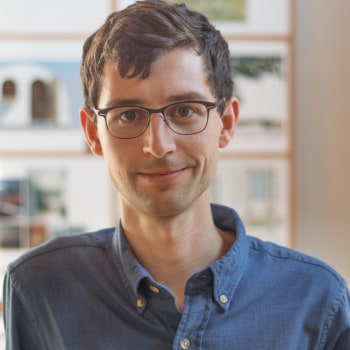THE OASIS | Roosevelt island , NYC
Sanchit Lal, Mohana Das, Yassin Nooradini, Shahzeb Rahman, Vida Pasandidehkho
student
Politecnico di Milano, Polytechnic University of Milan, School of Design
India
Urban Design and Landscape
The Oasis is developed as a multi-functional hub that harbors spaces of retail, commerce, hospitality, recreation and relaxation. Located in between the… more

Matthew Rauch
advisor
https://www.architecture.yale.edu/
American
I make spaces and places with an emphasis on color, texture, and form. more
This is a very compelling project that is thoroughly developed and extremely well presented. It seems to address all scales of the unique site, as well as accounting for changes that we may see in the future. Rising tides, hurricanes, and other long term effects on this precarious site all seem to have been researched and have informed the design process. I also particularly appreciate the intervention to the historic smallpox hospital, which is such an iconic landmark and symbol for the island.
The formal language is quite strong, and I admire the way that it doesn't necessarily "follow" the Kahn precedent, but takes some cues form the "sliced blocks" and re-imagines and harmonizes with them in a new way. Not only is it an apt addition on such an important site, but it is very timely considering the long timeline of developments on the island; from the history of the site as place for rehabilitation, to the housing developments and competitions of the 70s, to the more recent takeover by larger institutions (Cornell Tech). This project situates itself within that dialogue of how to use the space imaginatively now, and in the future.
I can only think of other ways that this project might explore the city's relationship to the water. For example, could the formal language of the project be further informed by the average daily tidal shift of the East River, not only on the macro scale of decades, but also at the changing of tides over the course of a single day? I could imagine the entire "edge" of the island being reconfigured to allow water into tidal pools at the interior of the island. Thus, the edge of the island becomes a constantly shifting entity, re-configuring the visitor's experience of the East River. One thinks of the tidal shifts on the inclined planes of the Snohetta Oslo Opera House, or of the way that Piazza San Marco regularly floods and changes the way that Venetians experience the square. I also think of Playlab's recent project for Plus Pool, which advocates for a clean swimming space in the East River. Perhaps this project could respond to these ideas in new way?
A good project brings up these kinds of large-scale questions on public space, and this succeeds at that level. Thank you for the opportunity to take a look!


